Abundance: common
What: fruit; pit
How: fruit raw, jelly/jam, or wine; pit ground and dried, then boiled
Where: sunny fields
When: early summer
Nutritional Value: calories, flavonoids
Dangers: none
Ripe and unripe Chickasaw Plums.
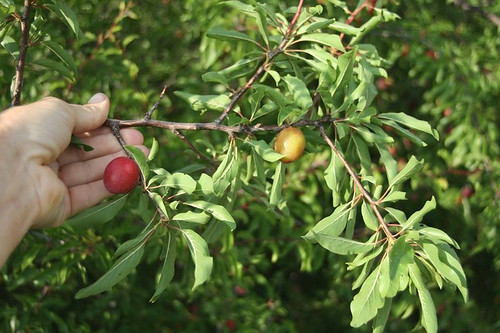
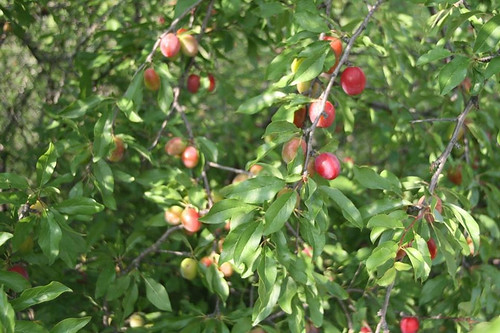
Ripe Chickasaw Plums.
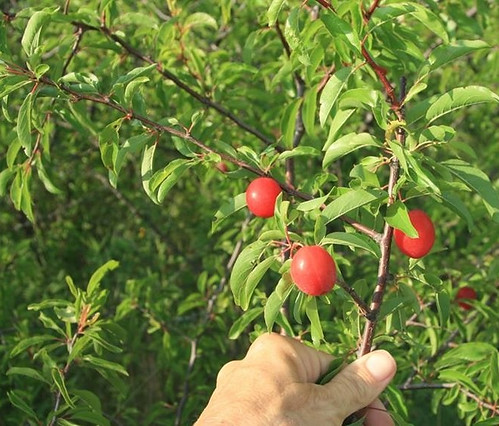
Chickasaw plum thicket.
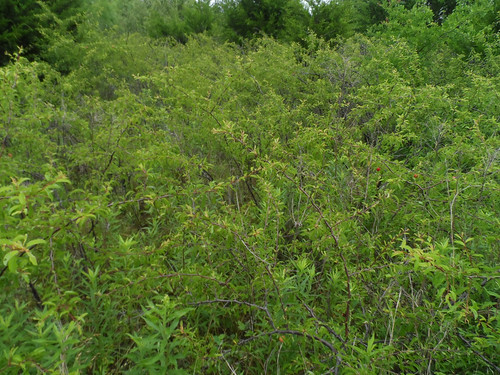
Close-up of branch.

Close-up of Chickasaw plum thorn.
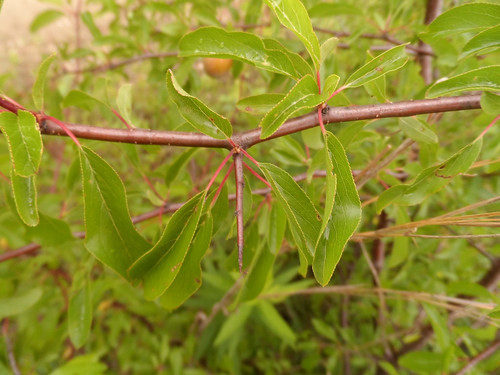
Texas distribution, attributed to U. S. Department of Agriculture. The marked counties are guidelines only. Plants may appear in other counties, especially if used in landscaping.

North American distribution, attributed to U. S. Department of Agriculture.
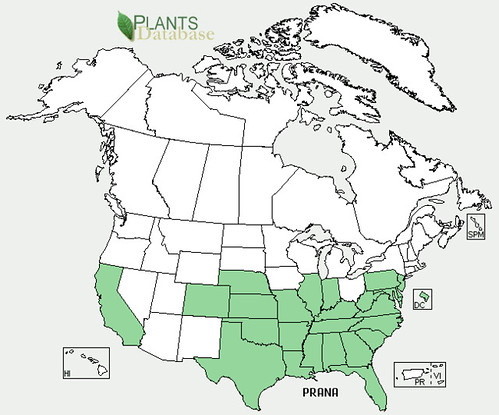
Forming thickets of large bushes/small trees across Texas, Chickasaw Plums are by far sweeter than Mexican Plums. They are covered with white flowers in the mid-to-late winter and the fruit is ready to pick by the beginning of June.
Small but very sweet, these plums can be eaten raw, made into preserves, or even fermented into wine. The pits contain a small amount of cyanide but Native Americans would grind the pits then allow them to sit for a few days. During this time naturally occurring enzymes would break down the cyanide. The ground pit material would then be boiled as a porridge or perhaps used as a seasoning.
Buy my book! Outdoor Adventure Guides Foraging covers 70 of North America's tastiest and easy to find wild edibles shown with the same big pictures as here on the Foraging Texas website.

